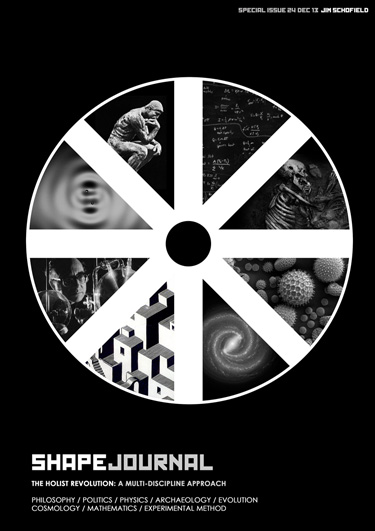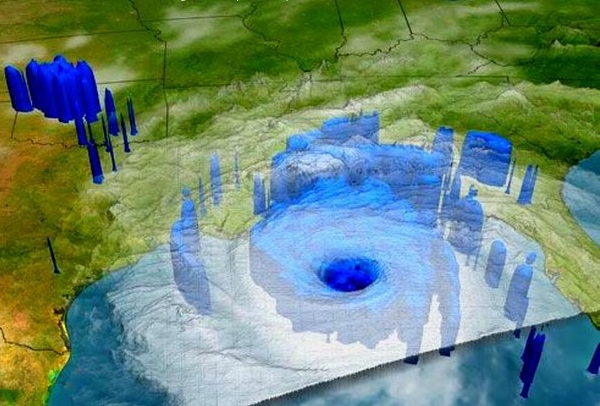Can we definitively establish the philosophical bases on which Science has been built?
There are extremely important reasons for this question. First, there is the evident way that it has totally transformed human society via Technology. And second, it has inexorably led its practitioners (and the rest of society) into an unavoidable theoretical cul de sac, with persisting and innumerable contradictions and anomalies.
It surely, therefore, has to be the most important task of our age to attempt to transcend the caused impasse in understanding Reality more fully?
There must be a major and universal, but un-admitted crisis in Science as a whole. But, it isn’t transparently evident, because both scientists and the public are deceived by the continuing and even accelerating successes of Technology.
Another confirmation of this crisis is that I, in a long life in Science, have never seen so many of its leading practitioners shouting out its believed-in virtues so loudly (and regularly) from the rooftops!
Practitioners are uncomfortable, but see only more contradictions and crises ahead, and have to convince themselves (and everyone else) that the current ideas and methods will see us all through to what we seek.
And, in Sub Atomic Physics that is evident in both its experimental practice, and in its so-called “Theory” The experimental width has narrowed down to a solely technology-led development: new, ever more powerful telescopes (which see ever more) and Accelerators (which smash “fundamental” particles to smithereens in order to see what they are made of). And, both deliver a relatively constant stream of new discoveries and associated data to fuel the now established narrow paths of development, into a relative torrent.
Yet, the so-called theoretical results are indeed philosophically abysmal. And while ever-new, but inexplicable, discoveries in Space also lead to ideas like Dark Matter and Dark Energy, the cosmologists retreat into unfounded speculation concerning multiple dimensions and unseen Universes, along with the purest of pure Forms in Mathematics, such as String Theory and a Space-Time 4-dimensional “purely formal substrate” to deal with Gravitation.
The current Grand synthesis (though it is currently being challenged by even worse idealist nonsense) has for some time now been The Copenhagen Interpretation of Quantum Theory, with it “cornerstone proof” delivered by the famous Double Slit Experiments, and its abandonment of explanatory theory for pure mathematical descriptions, standing indubitably upon an entirely idealist stance.
Crisis? They are in a terrible mess, and daily only dig themselves deeper into the mire!
Oh, I am well aware they would all deny it vehemently, but I have never, anywhere, met worse philosophers than are presented by modern physicists. If the reader needs convincing of this, may I recommend reading the truly atrocious
Physics and Philosophy by Werner Heisenberg, who along with Niels Bohr, established the Copenhagen stance, and won the day over giants like Einstein at the Solvay Conference in 1927. [Yes, it is a long time, and confirms my description of the impasse being still totally unresolved to this day]
But, the actual causes for this crisis were never revealed, and were by no means even new. They had been around for literally millennia, and never resolved. Indeed, from the time of the illustrious ancient Greeks, some 2,500 years ago, a major split took place in what later became known as Philosophy. The two streams that emerged were concerning the ultimate Nature of Reality: on typified it as holistic, as embodied in the ideas of the Buddha, and the other was pluralistic, which was subscribed to by literally all of the famous Greek philosophers.
It was an important split, and, at that time, unavoidable, due to Mankind’s still undeveloped ideas in such areas. They were, in fact, very different ways of trying to understand Reality, and both made assumptions to facilitate those investigations.
Perhaps, the holist view was, surprisingly, much closer to the true Nature of Reality, but at that time pretty well unable to direct any sort of investigative practice.
The pluralist view, on the other hand, was very different, for it did, indeed, provide an effective and useful method of studying Reality. It made it perfectly OK to “hold Reality stall” – to actually both isolate and change an area of Reality by farming it in carefully protected and maintained plots, where as many confusing or “inconsequential” factors as possible were either removed or held constant. And, this was considered not only legitimate, but actually
the only way to reveal what were considered to be eternal causing Laws, that were actually driving it
Now, from a purely pragmatic view, the comparison seemed to be a case of “no contest”, for the holist view merely led to a human-based outlook, while the pluralist view led to a technological methodology that could be made to actually work. What it involved was an active intervention into Reality within isolated Domains, which were ideally tailored to reveal normally hidden relationships, by the elimination or control of literally everything else.
It was clearly a powerful approach, and when carried out in the best possible way, did reveal something, not only informative as to cause, but also
useable in producing required outcomes. It was indeed almost magical! Clear patterns were revealed that could be extracted and even formulated into mathematical equations, to be used when required.
BUT, they could never be used in totally unfettered Reality. Not only had Reality to be completely controlled, but also in exactly the same way that had enabled the extraction of the revealed form to now be used. But, nevertheless, it was a great success! However, its consequent formulation into a philosophical standpoint was far from the Truth.
For philosophically, it identified the actual motive forces of Reality as precisely these relations that had so carefully been arranged for in the very unnatural and necessary conditions for their revelation and extraction. It just wasn’t true!
What had been developed was a Technology for using parts of Reality, but NOT yet a means of understanding Reality. So, even alongside this technological stance and productive method, there appeared a very different stance, which was holistic, and attempted to explain phenomena in Reality in terms of the revealed properties of the substances involved.
These were, of course, the theoreticians, who were always trying to integrate various discoveries into a comprehensive overall scheme.
Remember, these two different stances co-existed awaiting an expected future bridge between the two. But, this situation also led to an inevitable growing apart of the various groups of scientists involved. We had the observers and data takers – the Experimentalists! Also, there were the theorists with their ever-wider attempts at explanation. And finally we had the technologists, with their equations and pragmatic purposes.
And, as time passed they didn’t ever manage to approach a single view, but instead grew ever further apart.
Indeed, an interesting much wider social effect was imposed, due to the continuing success of the technologists, in that these gains were increasingly turned into the main purpose of Science, so that the constant question became, “But, how can you use it to benefit everyone?” And also, “What can you make using your discovery?”
The technological tail increasingly wagged the investigative dog!
The proof is evident absolutely everywhere. Bigger and better telescopes, and bigger and better Colliders are now the only sources of new data, and computing products get smaller and more powerful by the day. Can anyone doubt the totally dominating imperative in today’s Science?
But, the defeat of the explanatory theorists at Solvay, also involved a major turn “theoretically” – for without the presence of both alternative stances as embodied in the pluralist/holist Dichotomous Pair involving both physical explanations and formal descriptions, the very last vestiges of real theory were rooted out, and replaced with completely with mathematical forms, with some apparently “theoretical” trimmings but real coherent and comprehensive explanations were banned!
Sub Atomic Physics now subscribed fully to the idealist position that Formal laws drove Reality entirely.
What “explanations” there were, became entirely secondary and descended into mere analogies, rather than delivering a real understanding of what was occurring and why. And this descent was thoroughgoing.
Comparing the new offerings with those employed by James Clerk Maxwell, make the distinction clear. He had effectively used an analogistic model, of his own design, of the nature of the supposed Ether filling all of Space, and used it to derive his famous Electromagnetic Equations. But, nothing remotely like this was now evident. Where Maxwell's analogy was derived in accordance with known phenomena, and in both delivering them and his equations, the new analogues were very loose and uninformed placeholders to excuse their now untouchable equations. At best, these analogues were mere "illustrative tales from macro Reality".
Now, some 200 years ago, there was a strong opportunity to rescue Science from its inevitable major crisis. It came in the work of German idealist philosopher Frederick Hegel from his studies into “Thinking about Thought”. For, he realised that human beings were in a seemingly impossible position when it came to actually understanding Reality, for they were not evolved to tackle such questions at all. Physically and mentally human beings were, and still are, hunter/gatherers, for since that time, the usual process of Natural Selection no longer determined things with the human race’s abilities.
Via bipedal locomotion, and the new and flexible use of the hand, the brains of hominids had indeed developed, but with homo sapiens, and particularly after the Neolithic Revolution (much too recent to allow significant genetic changes to be Naturally Selected), things changed, and future developments had absolutely nothing to do with selection of genetic changes, and instead were all about socially passed on knowledge via teaching and nature of Man’s thinking had been genetically selected for in a past era, which involved absolutely nothing about the questions being addressed here.
So, all of today’s human beings did not come into the world equipped-and-ready to tackle the questions arising in Science and Philosophy.
They would be forced to “pull themselves up by their own bootlaces” – in other words used what they were equipped with to find pragmatic and indirect routes to greater understanding, and would be by making concepts that were NOT correct, but, nevertheless, contained enough Objective Content to allow effective uses to be achieved in certain achievable conditions. Such conceptions would always and inevitably have finite “shelf-lives” – the time would always arrive, when they would completely run out of steam in attempting to solve certain problems.
And, at such points, the incorrect concepts, would lead to Pairs of consequent concepts that were completely contradictory. They couldn’t both be true!
They were termed Dichotomous Pairs, and the only way Man could conceive of dealing with them was to first attempt to find which of the two was correct, and when this inevitably failed, as it always did, was to use which one of the Pair fitted a particular problem effectively, and to switch to the opposite one when it didn’t!
This “pragmatic” solution is still what we do to this day.
But, Hegel went further: he had a method of transcending the impasse presented by such a crisis.
He soon realised that the problem could never be solved by merely comparing the two opposites within the dichotomy. What had to be done (which was by no means easy) was to unearth the key assumptions and even principles common to both concepts in such a Pair.
The task became to undertake a deep critique of these bases and then find better alternatives. Only by this “dialectical” method could such impasses be truly transcended.
Clearly, what Hegel had discovered about Human Thinking, also applied to Science. For, all our theories and derivations had been devised within Human Thinking too. Science wasn’t independent of us, and never could be!
But, though we would always, time after time, hit the buffers, and the impasse would be signalled by the achievement of these Dichotomous Pairs, which could indeed be tackled indirectly by the discovering and replacing of the things upon which they were ultimately based.
With this achievement, the way was indeed open for the unification of Science involving this valuable new approach.
Why didn’t it happen?
It wasn’t just another trick in the Formal Logic set of reasoning methods. It was based upon an alternative holistic approach, which not only differed fundamentally from centuries of pluralistic methods in Science, but also did not deliver an alternative methodology for the full programme of scientific activities and uses. The task was NEVER undertaken!
Yet, though the pluralist approach had proved very effective in a very wide variety of practical uses, its requirement of the necessary provision of ideal conditions for each and every “law” being used was a very expensive way of doing things. And, its inabilities to accurately represent totally unfettered (indeed naturally acting) Reality, was not only misleading theoretically, but continually led to seemingly insuperable impasses and Pairs of contradictory concepts generated from the very same bases. brought each and every sequence of consequent steps to its own dead-end. And, as investigations penetrated ever deeper into the very heart of Reality, the system became increasingly useless in delivering any real understanding at all.
Technicians would undoubtedly continue in the old was, upon their well-trodden and successful paths, but that would no longer suffice for scientists.
A conscious and essential Revolution had to take place, which would be upon literally “all new ground”. A new Holistic Science had to be built, and the universally employed pluralistic methods would in many important areas have to be totally transformed, using an, as yet undelivered, holistic set of methods, and, of course, an explanatory approach to Theory once more.
The direction of investigations will have to be wrested away from those only interested in the exploitation of new discoveries, and back into the hands of those attempting to truly understand Reality.


























